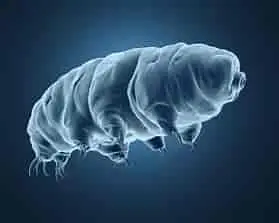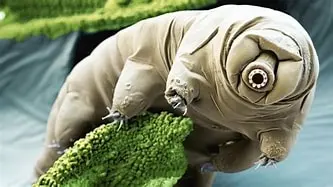5 Weird Facts About the World’s Smallest Organism: Tardigrades
Introduction
When you think of the smallest organisms on Earth, what comes to mind? Bacteria? Viruses? While those tiny critters are indeed minuscule, there’s a fascinating little creature that often gets overlooked—the tardigrade. Also known as water bears or moss piglets, these microscopic animals are not just small; they are incredibly resilient and full of surprises. In this article, we will explore five weird facts about tardigrades that will make you appreciate these tiny giants of the micro-world.
Imagine a creature so small that you can barely see it with the naked eye, yet it can survive extreme conditions that would obliterate most life forms. Tardigrades are the ultimate survivors, capable of enduring everything from boiling temperatures to the vacuum of space. But what makes them truly remarkable goes beyond their toughness. With their quirky appearance and bizarre abilities, tardigrades are a testament to the wonders of evolution. So, grab your magnifying glass, and let’s dive into the weird and wonderful world of tardigrades!

1. Tardigrades Can Survive Extreme Temperatures
The Temperature Extremes
One of the most astonishing facts about tardigrades is their ability to survive extreme temperatures. These tiny creatures can withstand temperatures as low as -272°C (-458°F) and as high as 150°C (302°F). To put that into perspective, that’s hotter than boiling water and colder than the surface of Pluto!
How Do They Do It?
So, how do these little critters manage to endure such extremes? Tardigrades enter a state known as cryptobiosis when faced with harsh conditions. In this state, they lose almost all of their water content and effectively shut down their metabolism. This allows them to survive in a suspended animation-like state until conditions improve. When rehydrated, they spring back to life as if nothing ever happened. It’s like hitting the reset button on life!
2. Tardigrades Can Survive in Space
The Final Frontier

You might think that the vacuum of space is no place for life, but tardigrades beg to differ. In 2007, a group of these microscopic marvels was sent into space as part of a scientific experiment. They were exposed to the harsh conditions of outer space, including extreme radiation and the vacuum environment, for ten days.
The Results
When the tardigrades returned to Earth, scientists were astonished to find that over two-thirds of them had survived the ordeal. Not only that, but they were able to reproduce after their return! This experiment demonstrated that tardigrades can withstand conditions that would be lethal to most other forms of life, making them true cosmic survivors. It raises the intriguing question: could tardigrades be the key to understanding life on other planets?
3. Tardigrades Have Been Around for Millions of Years
Ancient Survivors
Tardigrades are not just a recent phenomenon; they have been around for an astonishing 600 million years. That means they predate dinosaurs by a whopping 400 million years! These ancient creatures have witnessed the rise and fall of countless species and have survived five mass extinction events.
Evolutionary Marvels
Their longevity and resilience can be attributed to their unique evolutionary adaptations. Tardigrades have developed specialized proteins that protect their cells from damage during extreme conditions. This ability to adapt and thrive in various environments has allowed them to persist through the ages, making them one of the most successful life forms on Earth.
4. Tardigrades Can Go Without Food for Years
The Hunger Games
Tardigrades are not just tough; they are also incredibly resourceful. When food is scarce, these little creatures can enter a state of dormancy, allowing them to survive without eating for years. In this state, they can live for up to a decade without a single bite!
Feeding Habits
When conditions are favorable, tardigrades feed on a diet of algae, bacteria, and even other tiny organisms. They use specialized mouthparts to pierce the cells of their prey and suck out the nutrients, much like sipping juice through a straw. It’s a bizarre feeding strategy that showcases their unique adaptations to their environment.
5. Tardigrades Can Reproduce Without Mates

Asexual Reproduction
Tardigrades have a fascinating method of reproduction. While some species reproduce sexually, others can reproduce asexually through a process called parthenogenesis. This means that females can produce offspring without the need for male fertilization.
The Advantages
This ability to reproduce without a mate is particularly advantageous in harsh environments where finding a partner might be challenging. It allows tardigrades to quickly establish populations in new habitats, ensuring their survival and continued existence. Talk about being efficient!
Read This: Weird Facts About the World’s Largest Animal: The Blue Whale
Conclusion
Tardigrades are truly remarkable organisms that challenge our understanding of life and survival. From their ability to withstand extreme temperatures and survive in space to their ancient lineage and unique reproductive strategies, these tiny creatures are full of surprises. As we continue to study tardigrades, we gain valuable insights into the resilience of life and the potential for survival in extreme environments, both on Earth and beyond. So the next time you think about the smallest organisms on our planet, remember the incredible water bears and their weird, wonderful world.
FAQs
1. What are tardigrades?
Tardigrades, also known as water bears or moss piglets, are microscopic organisms that can survive extreme conditions, including high temperatures, radiation, and even the vacuum of space.
2. How do tardigrades survive without water?
Tardigrades can enter a state called cryptobiosis, where they lose almost all their water content and slow down their metabolism, allowing them to survive for years without water.
3. Can tardigrades reproduce without a mate?
Yes, some species of tardigrades can reproduce asexually through a process called parthenogenesis, allowing females to produce offspring without male fertilization.
4. How long have tardigrades existed?
Tardigrades have been around for approximately 600 million years, making them one of the oldest surviving organisms on Earth.
5. Where can tardigrades be found?
Tardigrades are found in a variety of environments, including moss, lichen, leaf litter, and even extreme habitats like hot springs and deep-sea environments. This article provides an engaging and informative overview of tardigrades, highlighting their unique characteristics and survival strategies. Feel free to adjust any sections to better fit your style or to add more specific details as needed!



So these little creatures can enter a state of dormancy, allowing them to survive without eating for years. Wow 😳😲 awesome 😎
Wow so wonderful ♥️♥️♥️